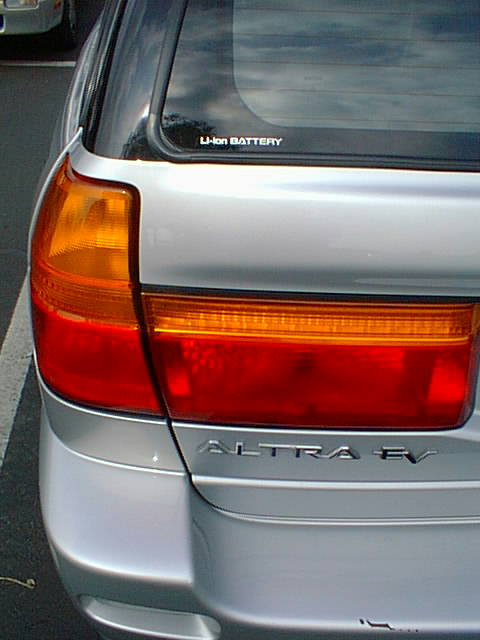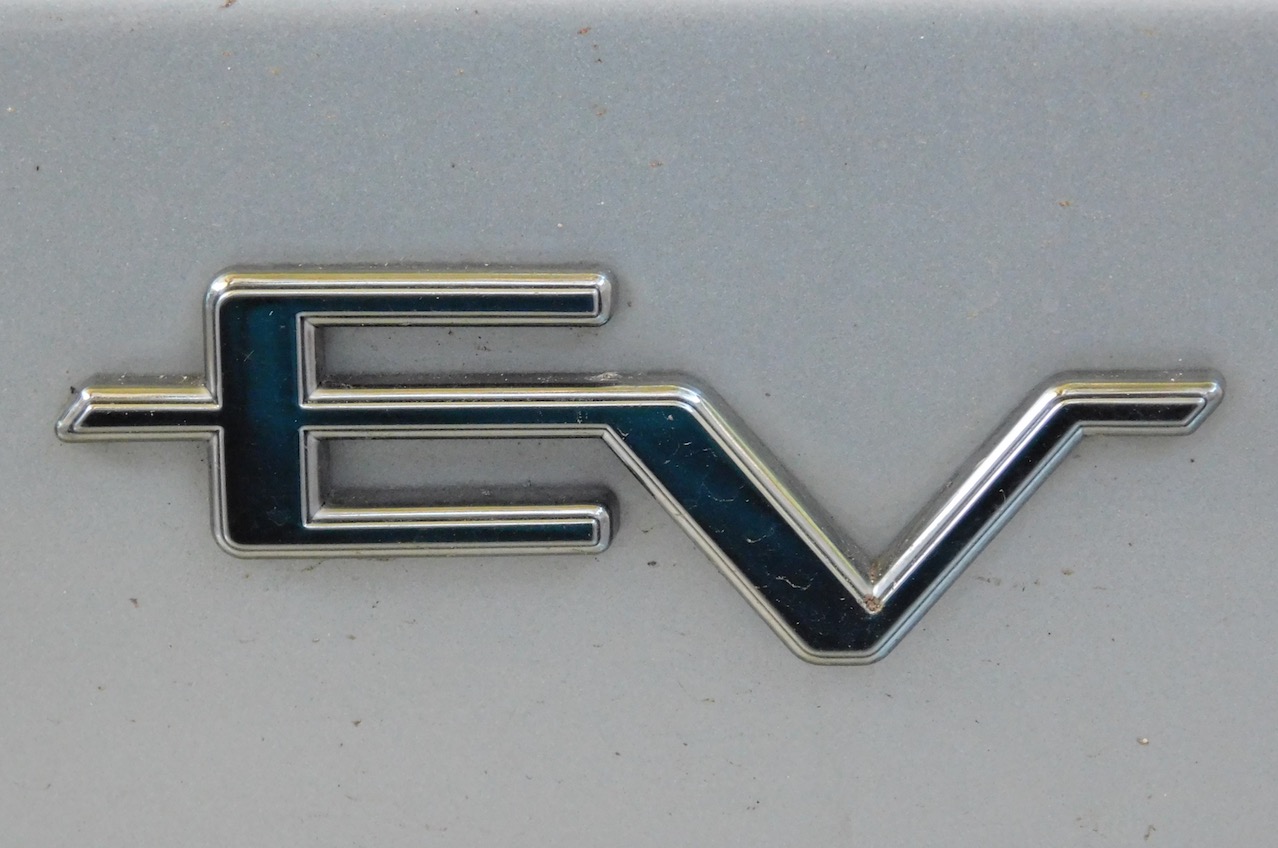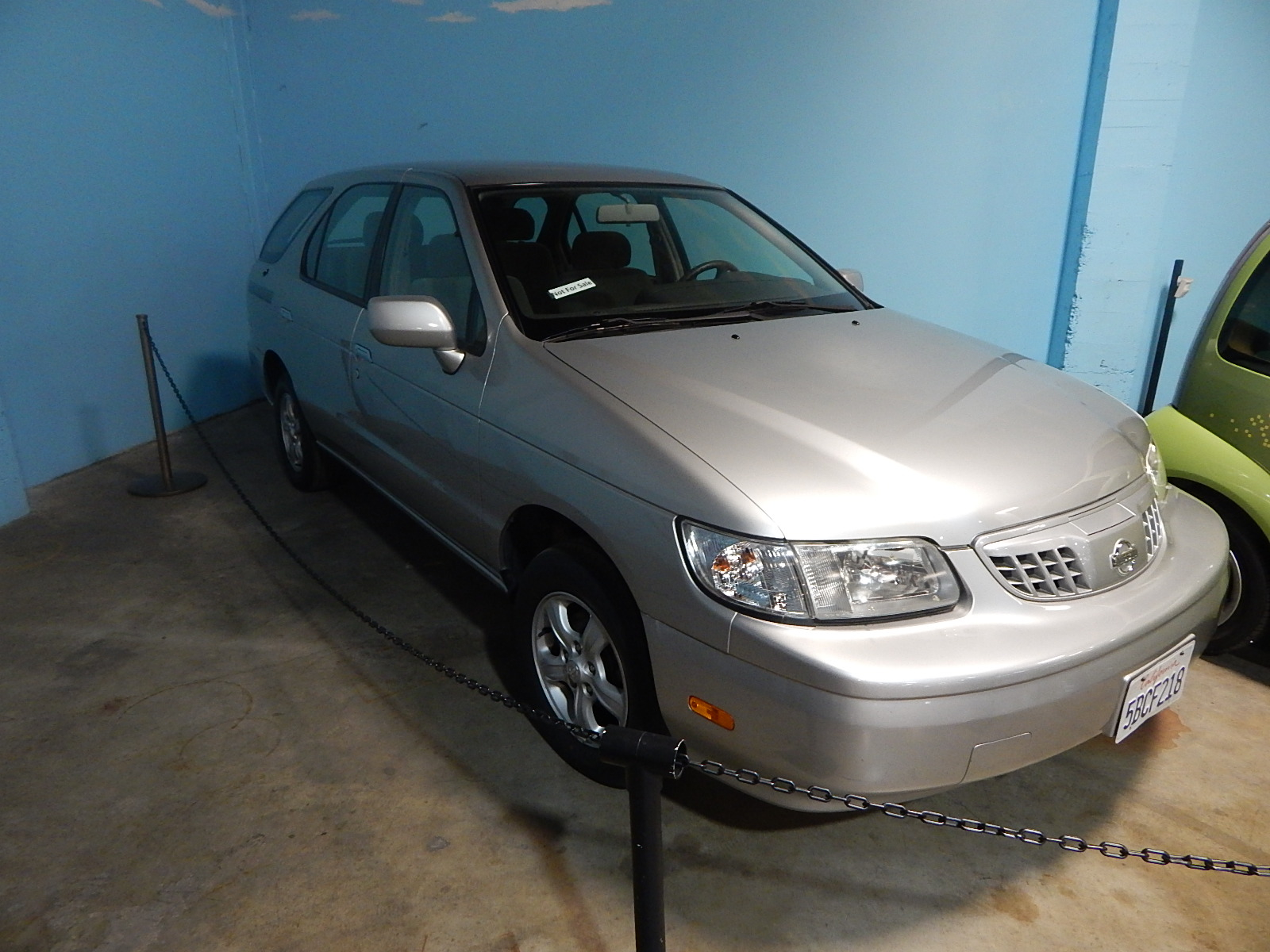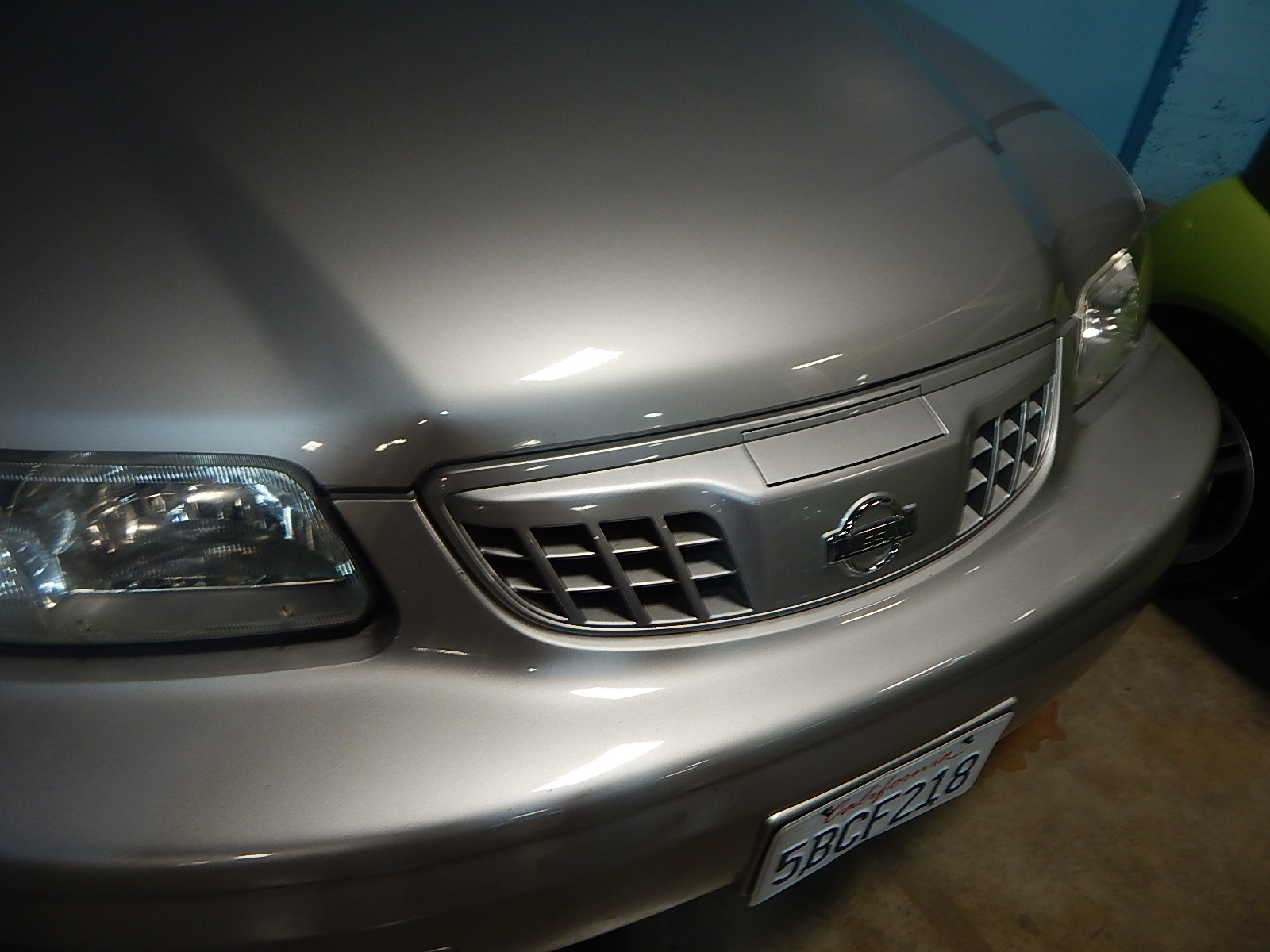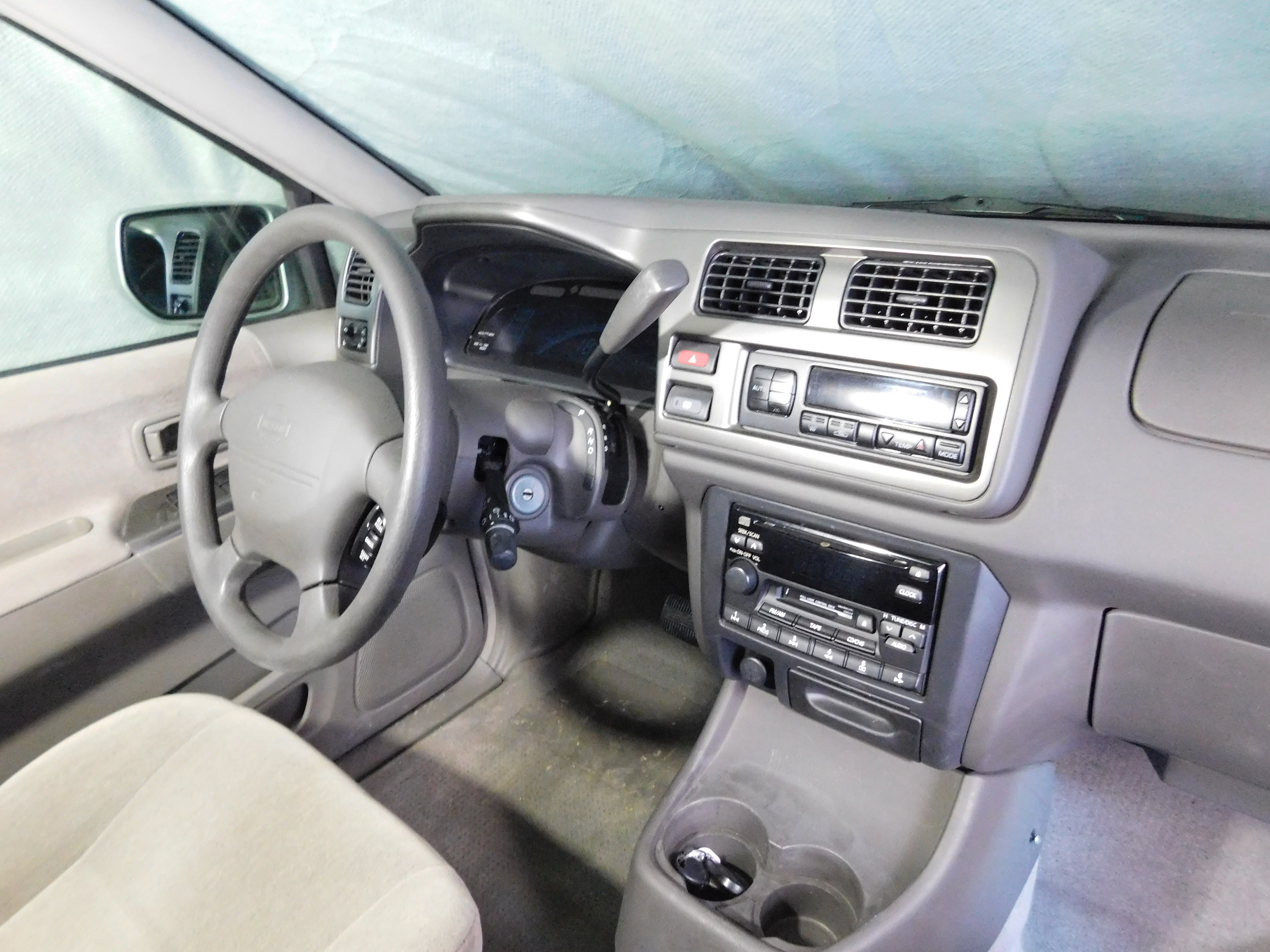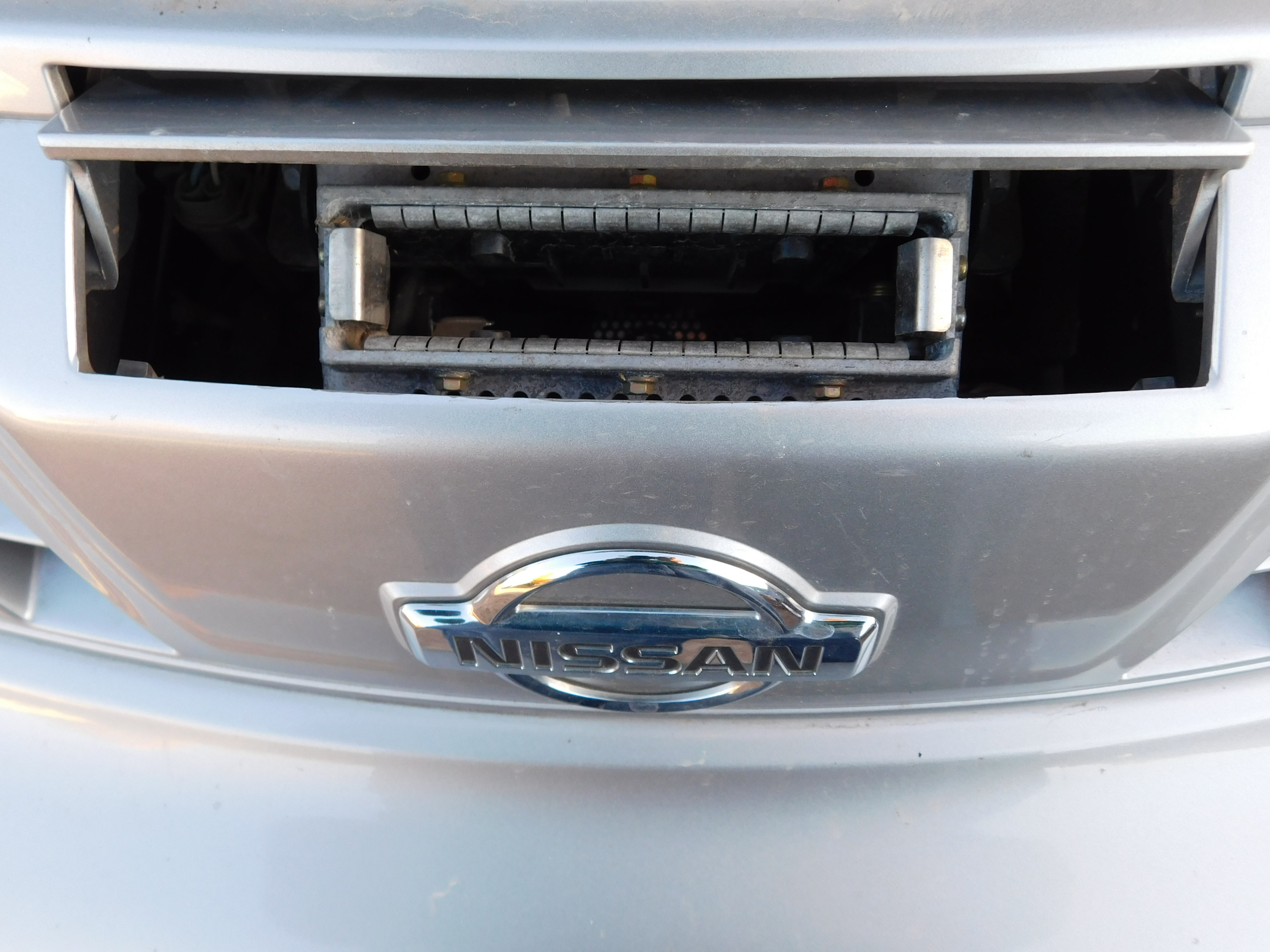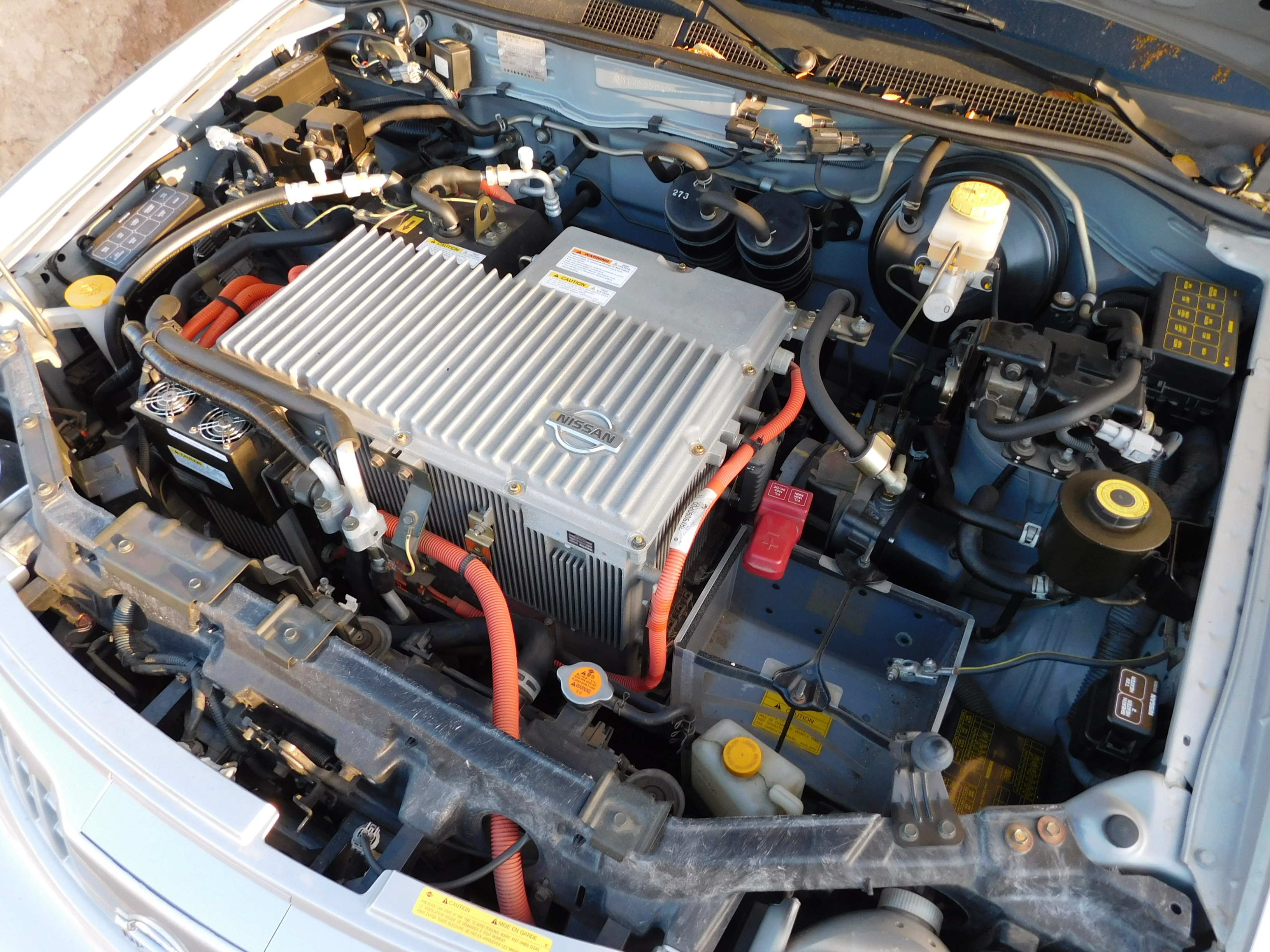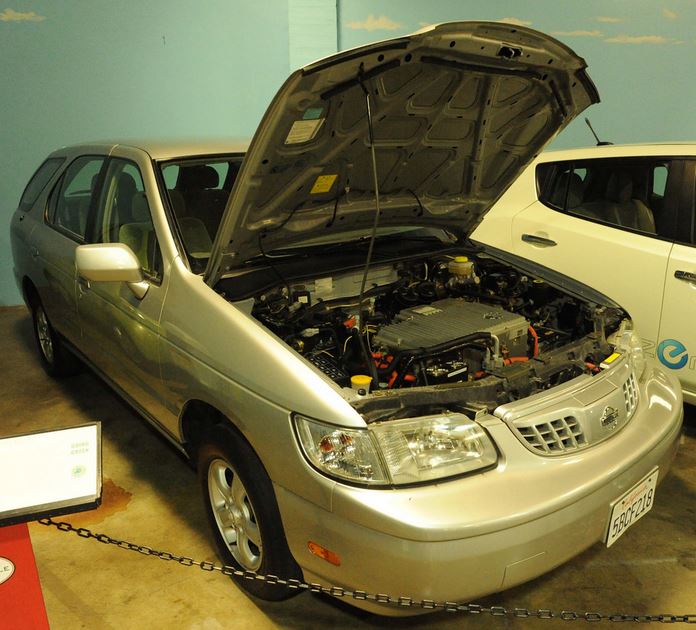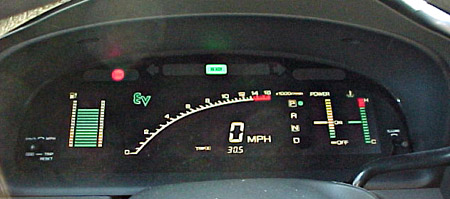
2002 (1998) Nissan Altra-EV OEM EV
" Altra-EV "
---> Electric Vechicle <---
===
Vehicle Description
Nissan’s Altra-EV was engineered in 1997 at the Nissan Technical
Center in Atsugi, Japan, and manufactured at the Tochigi
assembly plant, Tochigi, Japan. The stated design goal for the
Altra-EV was to combine the versatility of a minivan with
the environmental benefits of an EV. The Altra-EV's chassis is based
on the Nissan R'nessa station wagon manufactured for
the Japan market from 1997 to 2002.
The Altra-EV's manufacturer's suggested retail price (MSRP) was
$50,999 (in 1998 US dollars), had a published single charge range
of 80 - 100 miles (161 km) and a maximum published
range of 120 miles (190 km). Nissan claimed 0-50 mph (0-80 km/h)
times of less than 12 seconds and the EPA reported that
the Altra-EV had an adjusted mileage (miles per equivalent of a
gasoline gallon) of 117 mpg-US (2.01 L/100 km; 141 mpg-imp) in city
driving and 130 mpg-US (1.8 L/100 km; 160 mpg-imp) in
highway driving. The Altra-EV is rated at 304/342
hwy/city Wh/mi with a maximum speed of 75mph (governed).
The Altra-EV was the first OEM EV in the 1990's to utilize Li-ion
(lithium ion) traction batteries which were developed
jointly by Nissan and Sony Corporation. The traction pack consisted
of 96 cells configured in 12 modules with 8 cells per module
yielding a 32.4 kWh traction pack. Each module weighs 67lbs., with
a traction pack total weight of 804 lbs. (363kg). Modules
were rated at 95 amp hours and a total pack nominal voltage of 345v.
The traction pack was housed in an aluminum battery carrier
located under floor in the center of the vehicle and required five hours
to completely recharge via Delco's (originally Hughes Power Systems)
220vac - 30amp Magne Charge off-board inductive 6.6kW
paddle system (LPI). Nissan also advertised primary benefits of their
Li-ion battery system included accurate state-of-charge measurement
lacking “memory effects” of other advanced battery
chemistries of the era (most likely referring to Nickel Cadmium (NiCd)
chemistries). The Li-ion traction pack was expected to have a
charge-discharge rate exceeding 1,200 cycles, or 10 years of service.
As designed, the Altra-EV had a weight distribution ratio
of 56% / 44% front / rear.
The Altra EV's four-passenger sedan style body was marketed as a
roomy minivan style interior, and, at the time Nissan boasted
that the Alta-EV lacked their perceived “clumsiness of layout that
many other engineer designed electric cars exhibit.” Nissan
also advertised that the Altra-EV was specifically designed for the
American market and had available space for all the things
“Americans lug around.” Nissan seemed to feel (c1998) that the
Altra-EV's styling matched future trends where, as they noted, “tall
and functional would outweigh low and sleek,” yet claimed
concurrently that it was designed with aerodynamic
efficiency in mind, yet the Altra-EV's published CD is 0.36.
The Altra-EV was equipped with a neodymium permanent magnet
synchronous motor and a 32-bit high-speed RISC
(Reduced Instruction Set Computing) motor controller processor.
Although the motor featured a compact design; it generated
power of 62 kilowatts or 83 horsepower and maximum torque of
117 ft-lbs. at 13,000 rpm. The unique magnetic circuitry
and lightweight design (approximately 85 pounds) of the Altra-EV's
motor made it possible to achieve a high overall energy
efficiency of approximately 90% under ordinary driving conditions with
a motor weight <40% that of conventional induction motors.
Vehicle curb weight equaled 3,940lbs., GVWR of 4,579lbs., with a
payload of 820lbs. Wheelbase equaled 110.2in., length 191.7in., width
69.5in., hieght 66.8in., and ground clearance was 7.5in.
Standard features on the Altra-EV included regenerative braking, front
and rear ABS brakes (front disc, rear drum), pre-programmable
air conditioning, power windows, power locks, cruise
control, dual airbags, remote keyless entry, state of charge (SOC)
control system, 15-inch aluminum alloy wheels, front and rear captain's
chairs, and a 100-watt AM/FM/CD audio system. The Altra-EV's
rack & pinion steering was powered by an electric motor
and only utilized power when called for. The turning radius was
6.2 ft. and a steering wheel lock-to-lock 4.11 turns. It also uses
modified Nissan Maxima's front and rear suspension components
to handle the increased weight of the EV traction pack.
Thirty (30) Altra-EVs were believed to be imported into the
United States in 1998, with plans for another 98 units in 1999 - 2002.
Of those originally imported vehicles, the first 15 units were
planned for the So. Cal markets under leases to utility companies
including Southern California Edison (6 units), Pacific Gas and Electric
(3 units), Los Angeles Department of Water and Power (4 units),
and San Diego Gas and Electric (2 units).
Only two (2) of the Altra-EVs are known to exist today (c2023). One
is housed in Nissan's Heritage Collection in Nashville, TN, and
the other is in our Beata Electric Motor Carriage Collection in Vail,
CO. The Beata Collection's Altra-EV is the last
production Altra-EV made.
===
Additional information available at:
https://en.wikipedia.org/wiki/Nissan_R'nessa
===
---> Additional pictures below <---




